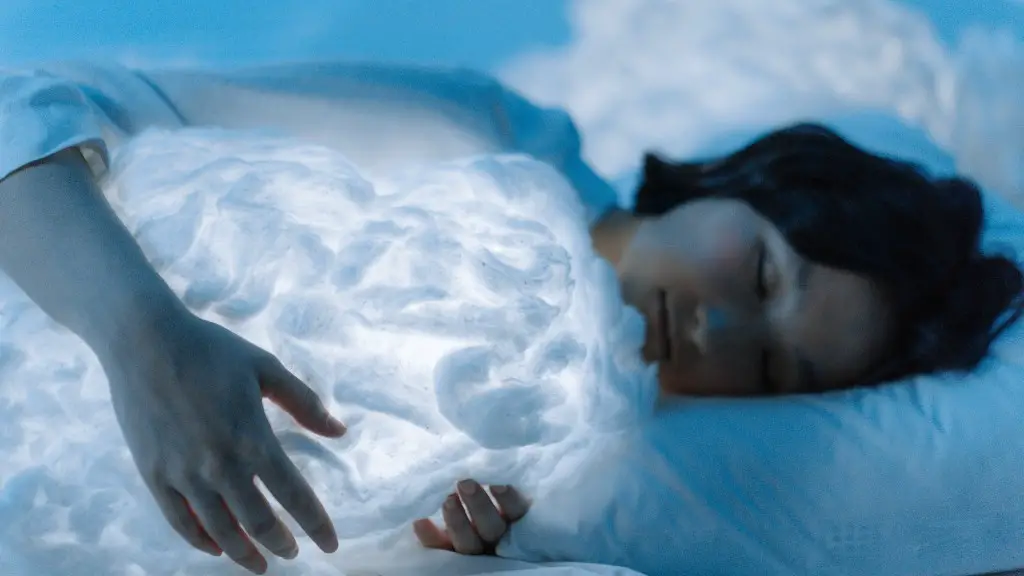When we sleep, our brains are active in what is called rapid eye movement sleep, or REM sleep. It is during REM sleep that we have most of our dreams. Scientists believe that dreams are a way for our brains to process information and sort through memories. Dreams are thought to come from the part of the brain called the limbic system, which is responsible for our emotions.
The dreams come from the cerebrum.
What part of the brain does dreams occur?
Dreams are part of the brain’s default network—a system of interconnected regions, which includes the thalamus, medial prefrontal cortex, and posterior cingulate cortex—that remains active during comparatively quiet periods. REM sleep is one example of a quiet period. Dreams may also occur during other types of sleep, such as slow-wave sleep.
The hypothalamus is a key player in regulating sleep and wakefulness. This small, almond-shaped region of the brain is responsible for controlling many important functions, including body temperature, hunger, thirst, and fatigue. The hypothalamus is also involved in the sleep-wake cycle, helping to regulate the body’s natural sleep-wake rhythm.
Is dreaming left or right brain
The human brain is divided into two hemispheres that, although structurally similar, are functionally quite different. Joseph (1988) reported converging evidence that the right hemisphere is relatively more active in REM sleep, during which dreams most often occur. This suggests that the right hemisphere may be more important for dream production.
The researchers found that dreams arise in the cerebral cortex, which is the outer layer of the cerebrum. The cells here are what we use to think and perceive with. The largest of these cells are called pyramidal cells, or pyramidal neurons. They resemble trees, with roots, trunks and branches called dendrites.
What makes dreams happen?
The activation-synthesis hypothesis suggests that dreams are caused by brainstem activation during rapid eye movement (REM) sleep and stimulation of the limbic system (emotional motor system). This hypothesis was first proposed by J. Allan Hobson and Robert McCarley in 1977 and has been the most influential theory of dreaming since then.
According to this theory, the brainstem is responsible for the generation of dreams. The limbic system is then responsible for processing the dream content and giving it emotional significance. This theory explains why dreams often seem bizarre and nonsensical, as they are generated by the brainstem without any input from the higher-level limbic system.
There is evidence to support the activation-synthesis hypothesis. For example, dreams are more likely to occur during REM sleep, when brainstem activity is highest. Additionally, people with damage to the limbic system often have difficulty interpreting the emotional content of their dreams.
Despite its popularity, the activation-synthesis hypothesis is not without its critics. Some argue that it does not explain why dreams often seem to be meaningful and relevant to our lives. Others point out that the theory cannot explain why some people have lucid dreams, in which they are aware that they are dreaming and can
The RAS is responsible for keeping you awake and alert by sending signals to the cortex, which is the part of the brain responsible for consciousness. The RAS is also responsible for regulating your sleep cycle.
Why do we forget our dreams?
MCH cells are associated with the sleep stage known as REM sleep. This is the stage of sleep when people dream. It is thought that the MCH cells turn on during this stage and prevent the dream from being stored in the hippocampus. As a result, people forget their dreams quickly.
Everyone experiences stress at some point in their lives. While some amount of stress is normal, too much stress can be damaging. When someone experiences a traumatic event, they may also experience stress-related nightmares. These nightmares can be extremely vivid and disturbing, and can cause further anxiety and stress. If you are struggling with nightmares after a traumatic event, it is important to seek professional help.
Do dreams come from the left side of the brain
There is some evidence to suggest that the right and left hemispheres of the brain contribute in different ways to dream formation. Some authors believe that the left hemisphere seems to provide dream origin, while the right hemisphere provides dream vividness, figurativeness, and affective activation level. However, more research is needed in this area to confirm these findings.
In a 2013 research review, they found no proof that this theory is correct. Magnetic resonance imaging of 1,000 people revealed that the human brain doesn’t actually favor one side over the other. The networks on one side aren’t generally stronger than the networks on the other side.
Are dreams stored in memory?
Dreams are notoriously difficult to recall. In fact, if a dream ends before we wake up, we will not remember it. The processes that allow us to create long-term memories largely lie dormant while we sleep, which is why most dreams are forgotten shortly after waking.
There is some evidence to support the idea that we cannot truly dream up new faces, but rather only recall ones we have seen before. For example, a study found that when people were shown pictures of made-up faces, they were unable to later remember those faces. Additionally, people with prosopagnosia, a condition that impairs face recognition, also report difficulty dreamng up new faces. However, it’s possible that with some practice, we could learn to dream up new faces. So while it may be difficult, it’s not impossible.
Do we see dreams with our eyes or brain
The research showed that during REM sleep, the brain activity was similar to when someone is awake and taking in new visual information. This suggests that the brain is “seeing” dreams during this phase of sleep.
There is no one definitive answer to the question of what shared dreaming is. The concept can be interpreted in a number of ways, and there is still much research to be done in this area. However, the general idea is that two or more people can share the same dream environment. The degree to which the dream is shared can vary, from simply having common elements or events that happen in each person’s dream, to the entire dream being identical.
There are a number of theories as to how shared dreaming may work. One possibility is that it is a form of telepathy, whereby two people are able to communicate with each other on a subconscious level. Another possibility is that it is a product of the human brain’s tendency to create symbols and stories that make sense of our experiences. Whatever the case may be, shared dreaming is an interesting phenomenon that is still not fully understood.
Do blind people dream?
Although blind people may not see as much in their dreams as sighted people, their other senses are usually enhanced. Blind people often report dreaming in more sensory detail than sighted people, with increased sensations of sound, touch, taste, and smell. Certain types of dreams are also more common among blind people than sighted people.
When you dream about someone, it may be a reflection of how you feel about them in your waking life. Your dream may be telling you to pay attention to that person in your waking life. Your subconscious may be trying to connect the dots on something and needs your conscious mind to help them figure it out.
Why do we wake up at 3am
If you wake up at 3 am or another time and can’t fall back asleep, it may be due to lighter sleep cycles, stress, or underlying health conditions. Your 3 am awakenings may occur infrequently and be nothing serious, but regular nights like this could be a sign of insomnia.
The optic nerve in your eyes senses the morning light and sends signals to the SCN. The SCN then triggers the release of cortisol and other hormones to help you wake up. But when darkness comes at night, the SCN sends messages to the pineal gland. This gland triggers the release of the chemical melatonin, which makes you feel sleepy.
Final Words
The cerebrum is responsible for dreams. The cerebrum is the largest part of the brain and is divided into the left and right hemispheres. Each hemisphere is responsible for different functions. The left hemisphere is responsible for logical thinking and the right hemisphere is responsible for creative thinking.
The jury is still out on what part of the brain dreams come from. Some scientists believe that dreams are a way for the brain to process information and sort through memories. Others believe that dreams are a way for the brain to release stress and anxiety. There is still much research to be done on this topic.





